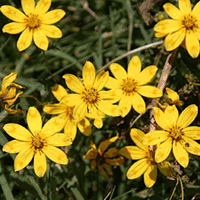 |
Daisies |
An important day for Rastafarians is Ethiopian New Year, which falls on 11 September. Rastafarians have a four year cycle, each year named after one of the evangelists.
In Ethiopia the New Year comes at the end of the big rains; the sun comes out to shine all day long creating an atmosphere of dazzling clarity and fresh clean air, and the highlands turn to gold as daisies emerge to carpet the hills. Everyone dresses in new clothes, and children dance through the villages; in the evening households light bonfires and there is more singing and dancing.
The day is called Enkutatash, ‘gift of jewels.’ It is claimed that the Queen of Sheba was in fact an Ethiopian, and that when she returned from her visit to King Solomon—by all accounts an expensive venture—her chiefs welcomed her back by replenishing her treasury with enku, ‘jewels’. This spring* festival has been celebrated since very early times, the cessation of the rains marking a month of transition from the old year to the new.
Early in the morning everybody goes to Church wearing traditional Ethiopian clothing. Afterwards there is a family meal of injera (flat bread) and wat (stew). Girls go from house to house handing out bouquets and singing songs and boys sell pictures that they have drawn, and families and friends gather together to discuss their hopes for the New Year.